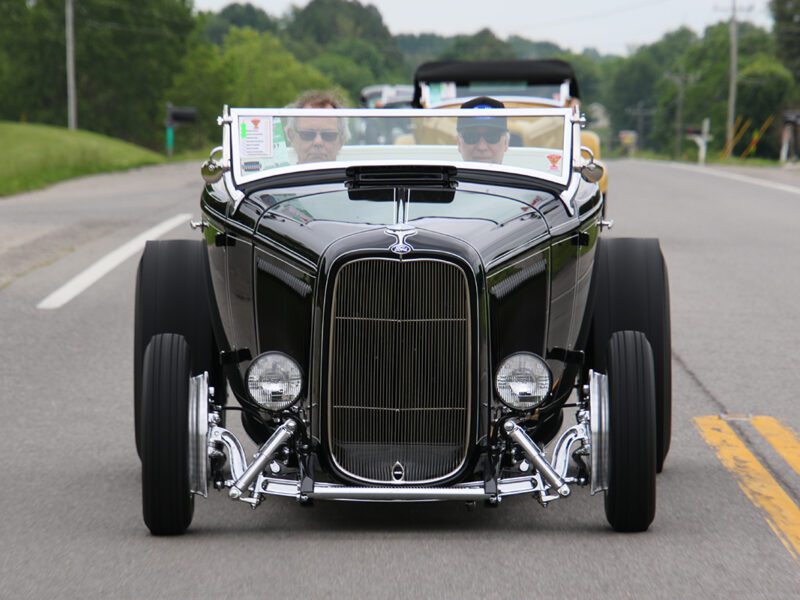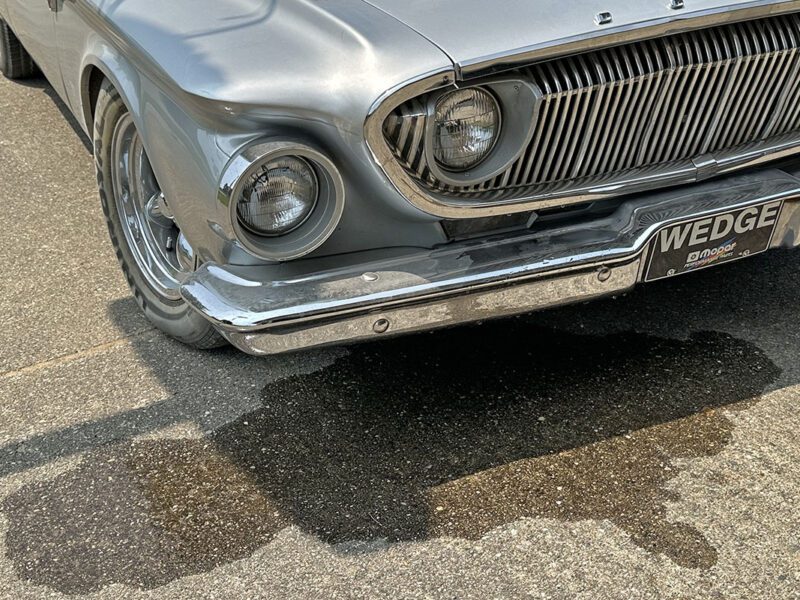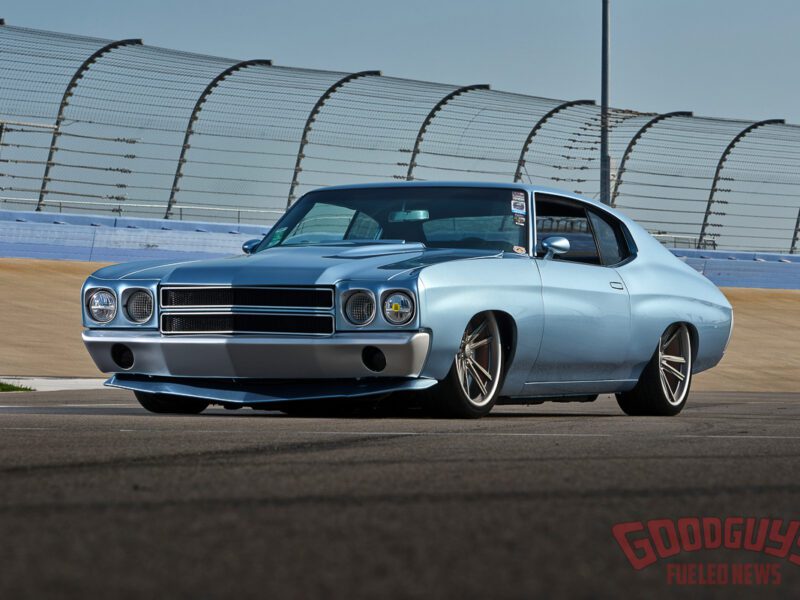Deep Breathing – A Guide to Forced Induction
There is no replacement for displacement…but then again, there is BOOST! Forced induction systems such as blowers and turbochargers have been around for years and when it comes to making serious power, while maintaining street cruising capabilities, the boost they produce is tough to beat.
 Even the OEMs understand the benefits of using forced induction systems on smaller engines to increase power, improve economy, and meet stricter emission laws, all while maintaining drivability and idle quality. The same benefits can be realized on hot rods and classics, or you can easily step up and go way out of bounds with serious power for your weekend cruiser if you choose.
Even the OEMs understand the benefits of using forced induction systems on smaller engines to increase power, improve economy, and meet stricter emission laws, all while maintaining drivability and idle quality. The same benefits can be realized on hot rods and classics, or you can easily step up and go way out of bounds with serious power for your weekend cruiser if you choose.
The concept of forcing air into an engine is not new, as racers have been stuffing cylinders with supercharged air for ages. Barney Navarro of early hot rodding fame is often credited as one of the firsts to adapt a GMC blower to a hot rod back in 1948, but blowers date back even further. Superchargers were used in Rolls Royce aircraft engines in the mid 1920s, and turbocharging was introduced on radial aircraft engines back then. Actually, the concept of the Roots blower was patented in 1860 (by the Roots brothers)!
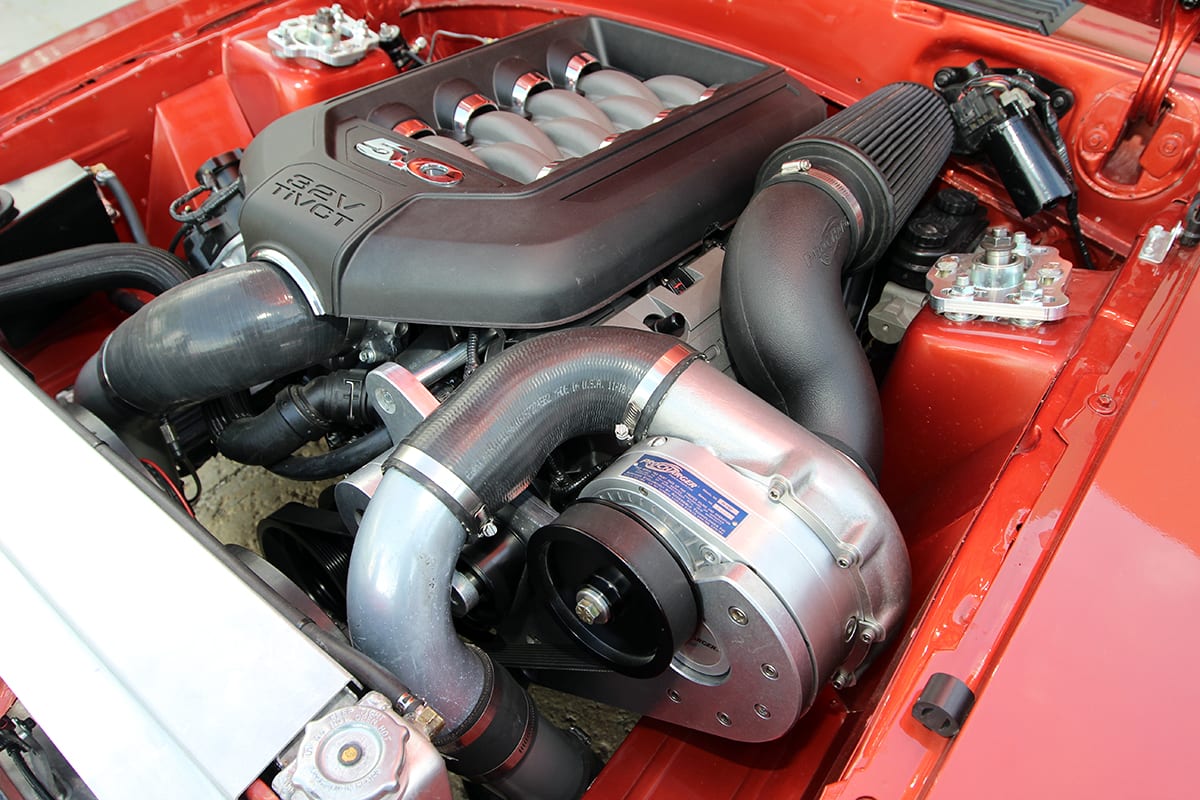 What a few decades of technology will change. The concept of forcing air into a cylinder still provides the opportunity to burn more fuel to create more power. And thanks to modern electronic fuel injection, being able to consistently match the amount of extra fuel with the increased oxygen makes supercharging or turbocharging your hot rod much easier in terms of tuning and performance. Blow-through carb technology has also come a long way and is a proven fueling process as well.
What a few decades of technology will change. The concept of forcing air into a cylinder still provides the opportunity to burn more fuel to create more power. And thanks to modern electronic fuel injection, being able to consistently match the amount of extra fuel with the increased oxygen makes supercharging or turbocharging your hot rod much easier in terms of tuning and performance. Blow-through carb technology has also come a long way and is a proven fueling process as well.
We wanted to share some of the latest forced induction systems that are available and reached out to several leaders in their field. The advanced engineering and research that has gone into turbocharging and supercharging is staggering, and the manufacturers are there to help you with any technical questions you’d like to cover – and there can be a lot, depending on your performance goals. Whether you choose a turbo, a Roots blower, or centrifugal supercharger, you’ll be amazed at what a kick in the pants a little boost provides.
 Vortech Superchargers
Vortech Superchargers
An LS Swap Boost
So, you think you’re done with your LS swap? You’ll be rethinking that plan when you see how easy Vortech Superchargers makes it to add serious boosted power with a kit designed for many LS engine installs.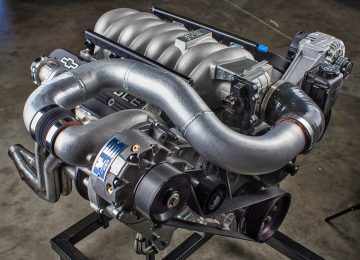
The GM LS-Swap Tuner Systems are designed to work with blow-through carbs and EFI systems while fitting the most common accessory drive systems. The kits include a billet aluminum base mounting bracket plus a 3/8-inch steel plate along with a Maxflow Race Bypass Valve. Four different superchargers are available depending on your power needs: The V-3 SCi to support up to 725hp, the V-3 Si for 775hp, the V-1 Ti for up to 950hp, or step up to their V-7 YSi for up to 1,200hp! Each system is available in satin, black, or polished finish and can fit into many classic muscle cars and trucks.
 ProCharger Superchargers
ProCharger Superchargers
Planning for Boost
Building a modern hot rod takes time, patience and in most cases, budget management. Most builds evolve over time and continue to be updated and improved along the way. ProCharger Superchargers understands this progression, which is why they developed a new Modular Accessory Drive Package for GM engines.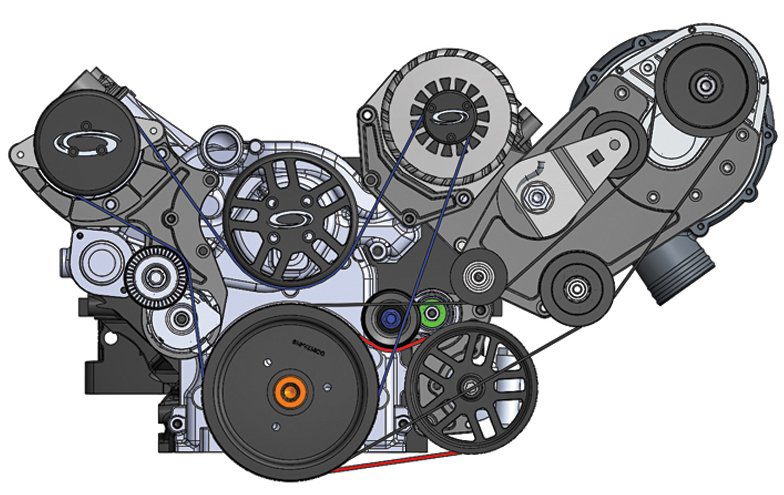
The company’s new serpentine belt driven accessory drive is set up for power steering, air conditioning, and charging, of course, to get you on the road and cruising. Then, when you’re ready to get more serious about power, you can easily add an optional bracket to install a P-, D-, F1- or F2-series ProCharger to deliver instant power at the beckon of your right foot. The systems are available for small- and big-block Chevys as well as LSx engines. ProCharger has fit these kits into many GM muscle cars including ’67-’82 Camaros, ’65-’72 Chevelles, and ’68-’72 Novas.
Sidebar – Keeping it Cool
One nemesis of a supercharger or a turbo is the heat that is generated through the process of forcing and compressing the air into the engine. With internal combustion engines, lower temperatures of the intake charge result in greater expansion of the air/fuel combustion, so anything you can do to lower the air temperature charge usually pays dividends when it comes to power output. To accomplish lower air temps with forced induction systems, an intercooler is a great way to go.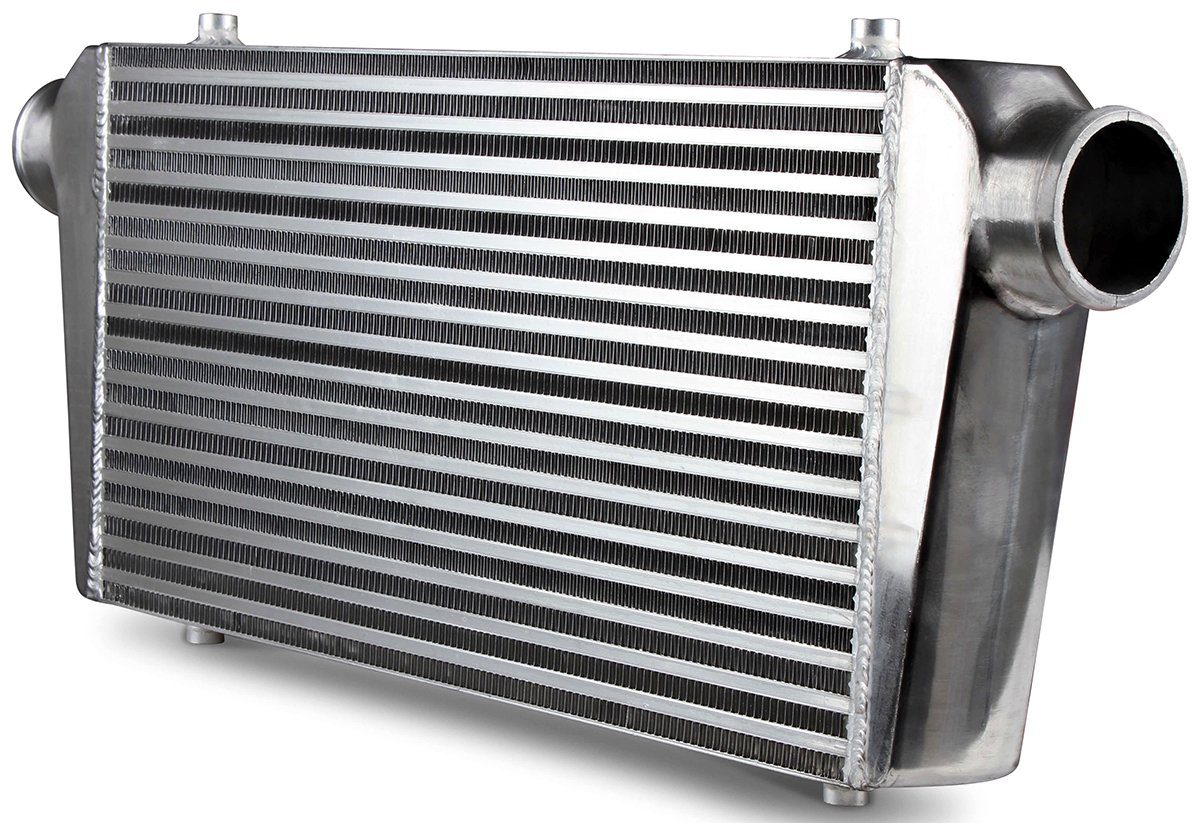
There are two styles of intercoolers: air-to-air and air-to-liquid. From their names, you can make out the difference of these two heat exchangers. An air-to-air system relies on the outside air passing over and through the fins to remove the heat of the compressed air charge inside. A liquid intercooler is plumbed into the cooling system and relies on the liquid that is cooled by outside airflow to remove heat from the air charge. Many factory supercharger or turbo setups incorporate a liquid-to-air system, but they are more complicated with plumbing and pumping required.
For most hot rodders, an air-to-air external cooler will suffice, is much easier to install, and more cost effective. Frostbite Cooling offers a number of different size intercoolers for universal applications.
 TorqStorm Superchargers
TorqStorm Superchargers
Twin Boost
When it comes to performance, finding a little power is always a good thing. And when a hot rodder finds a way to gain power, such as by adding a supercharger, well then, it stands to reason that adding two superchargers is even better! In the case of TorqStorm Superchargers, their 2XR Twin Supercharger kits are just the ticket for making serious power with menacing looks.
The 2XR is for serious performance applications and designed to support over 1,200 horsepower! This system is stripped of the accessories and supplied with two superchargers and blow-off-valves, two air filters, and all the necessary brackets, pulleys, belts and hardware. If you’re looking for a little less power for a street car, TorqStorm offers the 2X Series that includes the twin blowers along with a serpentine belt drive along with an alternator, power steering pump, and Sanden A/C compressor.
 Edelbrock
Edelbrock
Low and Mean
Looking to get the most power from your Gen IV LS3/L92 engine? Edelbrock’s Universal Supercharger System, PN 15400, will fit under most muscle car and truck hoods and provides instant power from idle to top end.
The kit is designed for rectangle-port cylinder heads and is based on a Corvette offset design for a compact fit and great looks. Edelbrock uses Eaton’s Gen VI TVS rotor, which features a four-lobe design with a full 160-degree of twist resulting in maximum airflow combined with minimum temperature rise and quiet operation. The system creates plenty of boost to deliver substantial low-end torque while keeping stress on the engine at a minimum. Plus, the drivability remains smooth during regular driving and cruising situations.
Sidebar – Three Ways to Blown Boost
When you get serious about choosing a supercharger for your hot rod, there are a few terms that may come up in your search. You’ll likely hear Roots or screw blowers, as well as centrifugal superchargers. Following are a few simplified descriptions of the big three.
Centrifugal:
The centrifugal supercharger earns its name from its compact housing and use of an impeller in contrast to a couple of long, twisty rotors. Like all blowers, the centrifugal design is belt driven off the crankshaft to spin an impeller which draws air into a housing and packs it in under high pressure, where it is sent to the engine’s intake. It’s an efficient process that produces more linear power compared to Roots blowers. And thanks to its compact design, it can be mounted to the side of the engine and even made to fit under the hood. (Just don’t call it a turbo!)
 Roots:
Roots:
The concept of a Roots style blower has been around since the late-1800s. First devised by the Roots brothers, it was used as an air pump for a number of industrial chores. The large housing holds two rotary vanes that spin in opposite directions, creating a positive displacement (a specific amount of air for every rotation). Air is brought in through an inlet, compressed, and pushed into the engine to create a ‘supercharged’ force of air. For many, it is the ultimate induction system when it comes to hot rods, but a Roots blower creates a lot of heat, sucks up a lot of power, and takes up substantial space. Regardless, there is no denying its sound, its power and its total bad assery in the looks department.
Screw:
A screw-driven blower is similar to a Roots, except its rotors are designed more like a screw, albeit a very large screw with thick, beefy threads as compared to a rotary vane of a Roots blower. As the air is pushed through the screws, it is actually compressed before being forced into the engine, which is very helpful at lower rpm. The process is much more efficient, therefore takes less parasitic power to operate and produces less heat.
 STS/Holley
STS/Holley
Stealth Turbo Boost
Turbochargers are a great way to gain boost but when it comes to street rods or pony cars, the packaging under the hood, especially with the exhaust work, can be a challenge. STS from Holley has addressed this dilemma with a remote-mount turbocharger system. That’s right, you can add a turbocharger to nearly any hot rod by mounting the turbo under the car, down low in the chassis, or even in the bed of a truck!
STS offers several universal remote mount kits based on your engine size and power expectations. This single turbo kit is designed for 5.0L – 6.0L engines and will support up to 620 horsepower at the crankshaft. Install benefits include not having to mess with the manifolds or headers as well as a lot less heat buildup under the hood. The kits are supplied with the turbocharger, wastegate, wiring harness, the all-important patented oiling system, turbo mounting flanges, and more. Get creative, be stealthy, and still get a performance boost!
 Blower Drive Service
Blower Drive Service
Back in Black
There is nothing inconspicuous about a big Roots-style blower reaching out from any engine, but if you’d like to black-out your big huffer, Blower Drive Service can handle it. BDS now offers their 8-71 blowers in a hard black anodized finish for a menacing, stealthy, contemporary, appearance.
BDS machines their own billet cases, end plates, drive components, and rotors in-house and pride themselves on having parts in stock and ready to ship. Their new Black Out 8-71 blowers are perfect for those want to make a subtle statement of big power with a modern black finish. For details on their entire line of 4-71, 6-71, 8-71, 10-71, and 14-71 blowers, give them a call or surf over to blowerdriveservice.com.
Sidebar – 471? 871?
When GMC started putting superchargers onto their Detroit Diesel engines back in the late 1930s, the blower was meant as merely an air pump to pull fresh air in and expel the exhaust. Originally, the blower was deemed a 6-71, as it was used on a six-cylinder engine with 71 signifying the 71 cubic inches delivered to each cylinder (a total of 426c.i. of air being pumped). Next came an 8-71 that produced 568c.i. of air (also 71c.i. per cylinder on an eight-cylinder). The nomenclature pretty much stuck for 10-71, 12-71 and on, even though the efficiency and numbers of cylinders has changed.
 The Blower Shop
The Blower Shop
Roots for LS
We’ve all seen the classic Roots blower perched atop a small- or big-inch GM, Ford, or Mopar V8, but what about the LS platform? With the availability of LS swap accessories, it sure seems like an ideal candidate for a Roots style blower doesn’t it? Well, the crew at The Blower Shop thinks so and offer several kits to give most LS engines a serious boost in power and looks!
A billet aluminum 71-series supercharger intake manifold is CNC machined to fit LS3 rectangle ports or LS1 heads with the cathedral ports. The manifold kit is supplied with all of the drive accessories when using an ATI Corvette damper and is designed to fit with the factory GM waterpump. The intake accepts any of The Blower Shop’s 6, 8, 10 or 1471 series blowers to force the air charge into the efficient LS cylinders.
 Whipple Superchargers
Whipple Superchargers
Boosted Coyotes
It’s great to see more Coyote powerplants powering classic Fords these days. Out of the box, the smooth performance of these engines is plentiful, but as hot rodders we’re always looking for more. Whipple Superchargers now offers their Gen 5 supercharger to bolt on top of the Ford V8 to pack in plenty more air, creating a serious increase in power and torque.
The Gen 5 supercharger features an all-new housing stuffed with the latest gears, bearings, and screw rotors, allowing it to spin faster with increased efficiency from idle to top end. Whipple’s proven twin-screw technology is complemented with a massive air-to-water intercooler to keep the air charge temps consistent and lower. The displacement of the blower is available as a 3.0L or 3.8L and comes with a six-rib pulley, fuel rails, intercooler core, fasteners, and the oval inlet accepts a stock 80mm throttle body or a billet 132mm and even 150mm throttle body.
 Precision Turbo
Precision Turbo
2.3L Upgrade
Precision Turbo offers turbochargers and components for everything from four-cylinders to mega-horsepower pro mod drag cars. One system that looks really cool is their bolt-in turbo upgrade for the Ford EcoBoost 2.3L four-cylinder engine. This engine delivers over 300hp in stock form under the hood of Mustangs and is tuned up a bit more in the Focus RS – and we see a lot of these cars at the autocross on All American Sundays.
The turbo upgrade is a direct drop-in replacement for the Mustang and features a divided twin-scroll turbine housing which helps improve throttle response, along with dual ceramic ball bearings for increased durability. A ported shroud compressor housing enhances the width of compressor MAP, adding low-rpm response and top-end performance. The Precision Turbo upgrade is capable of producing up to 520 horsepower when complemented with supporting mods and a custom tune. To top it off, Precision provides a one-year, no-fault, no-hassle warranty.
 Sidebar – What about Turbos?
Sidebar – What about Turbos?
Our guide is a little top-heavy on blowers and superchargers, yet turbochargers are in high demand on late-model engine swaps and are very popular on the drag strip. The biggest benefit of a turbo versus a supercharger is that the power is ultimately free because there is no parasitic loss in power because the impeller is spun by the exhaust gases.
Of course, like everything in performance, nothing comes free, as turbochargers have an inherent ‘lag’ at lower rpm as the exhaust pressure needs to increase to get the turbo to spool up to make boost. If you’ve ever ridden in a turbocharged car, they really start to put you back in your seat as rpm increases – and it’s quite a rush. One thing turbos have in common with all of the superchargers is the battle against heat, which is why most OEM turbocharged applications have a liquid-to-air intercooler to help reduce the air charge temperature.


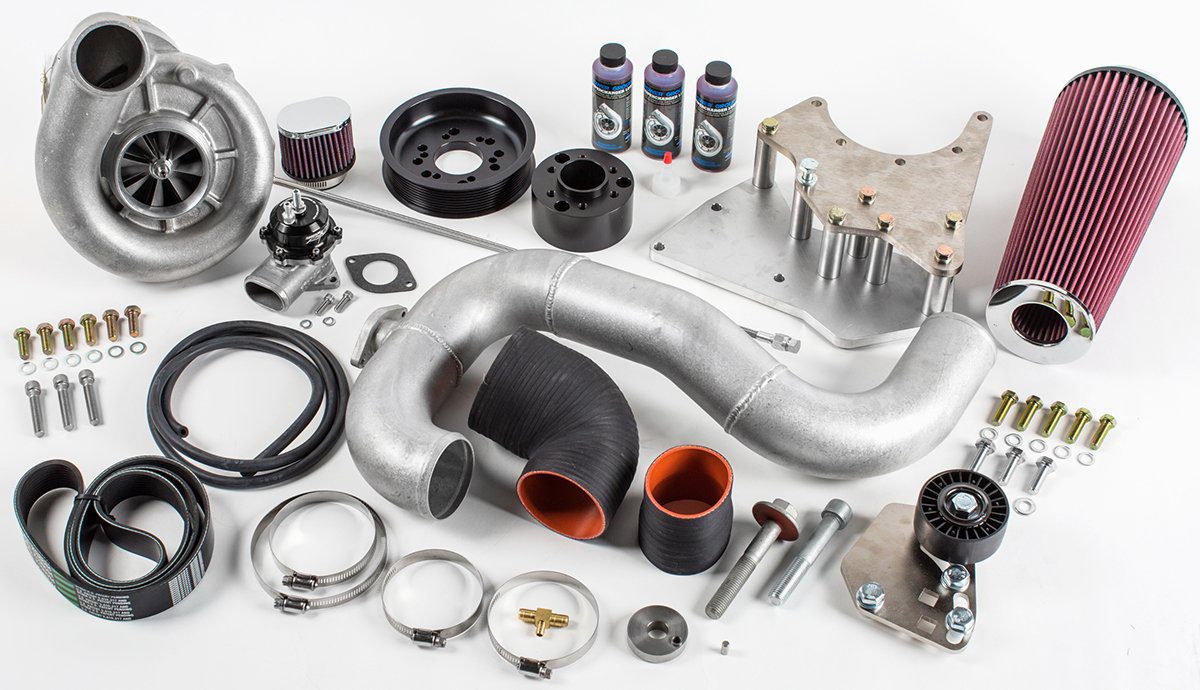 Vortech Superchargers
Vortech Superchargers ProCharger Superchargers
ProCharger Superchargers TorqStorm Superchargers
TorqStorm Superchargers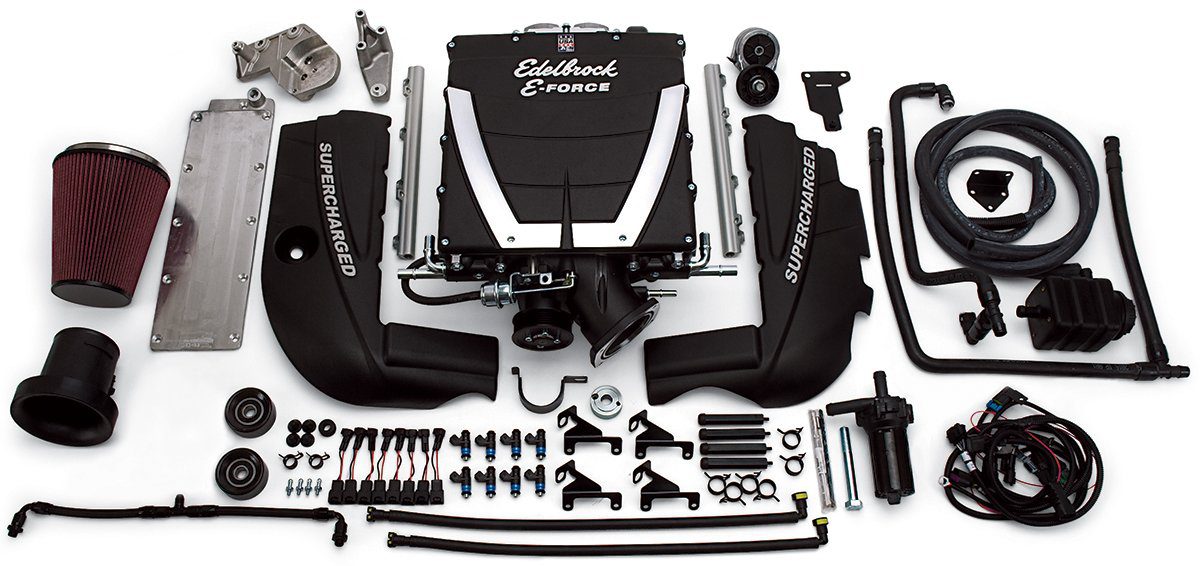 Edelbrock
Edelbrock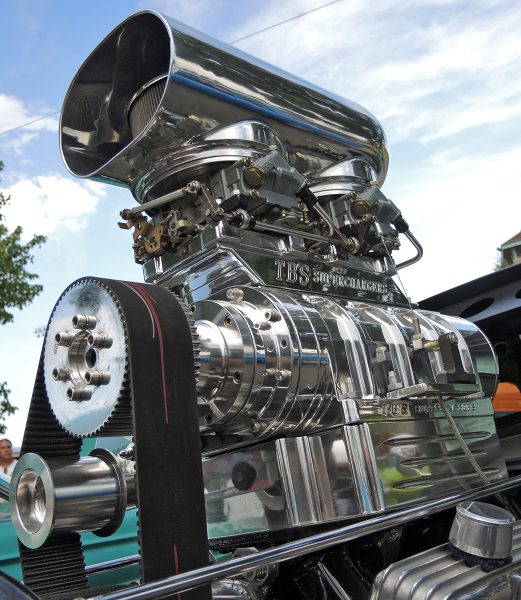 Roots:
Roots: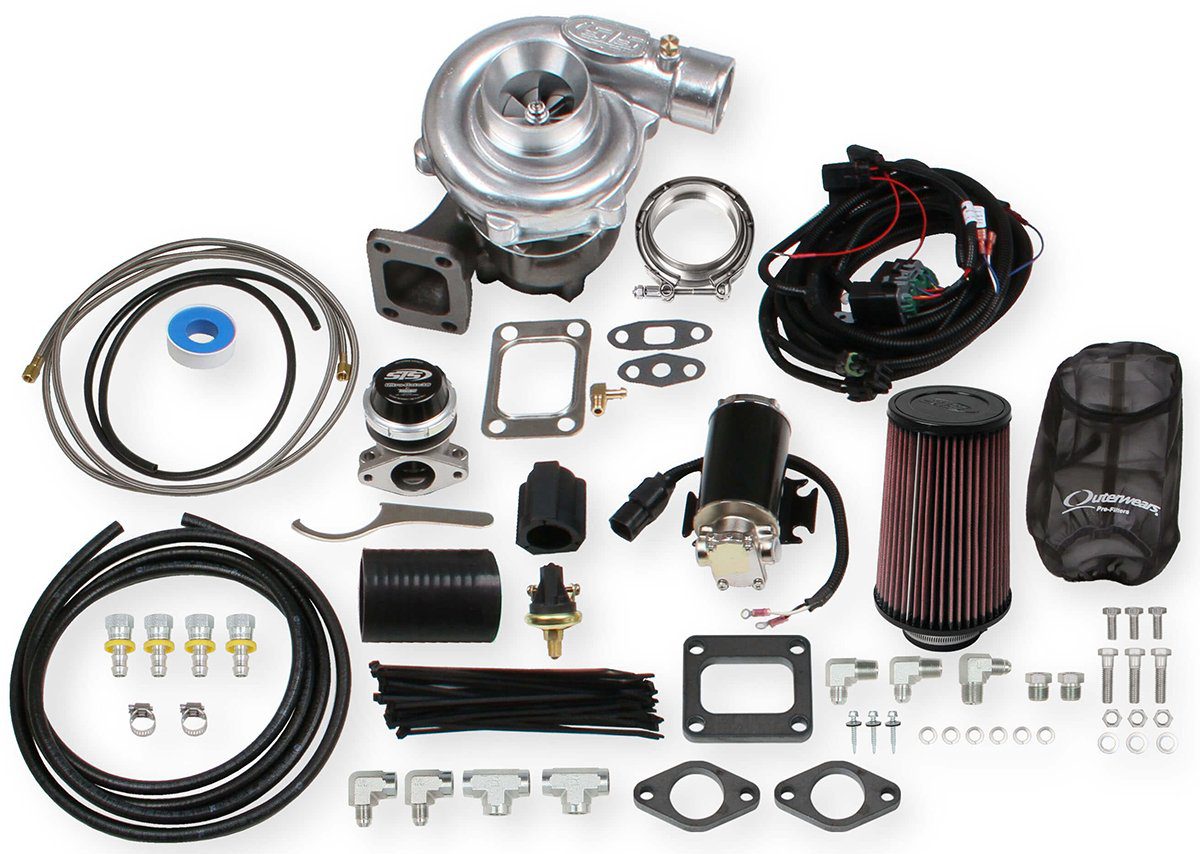 STS/Holley
STS/Holley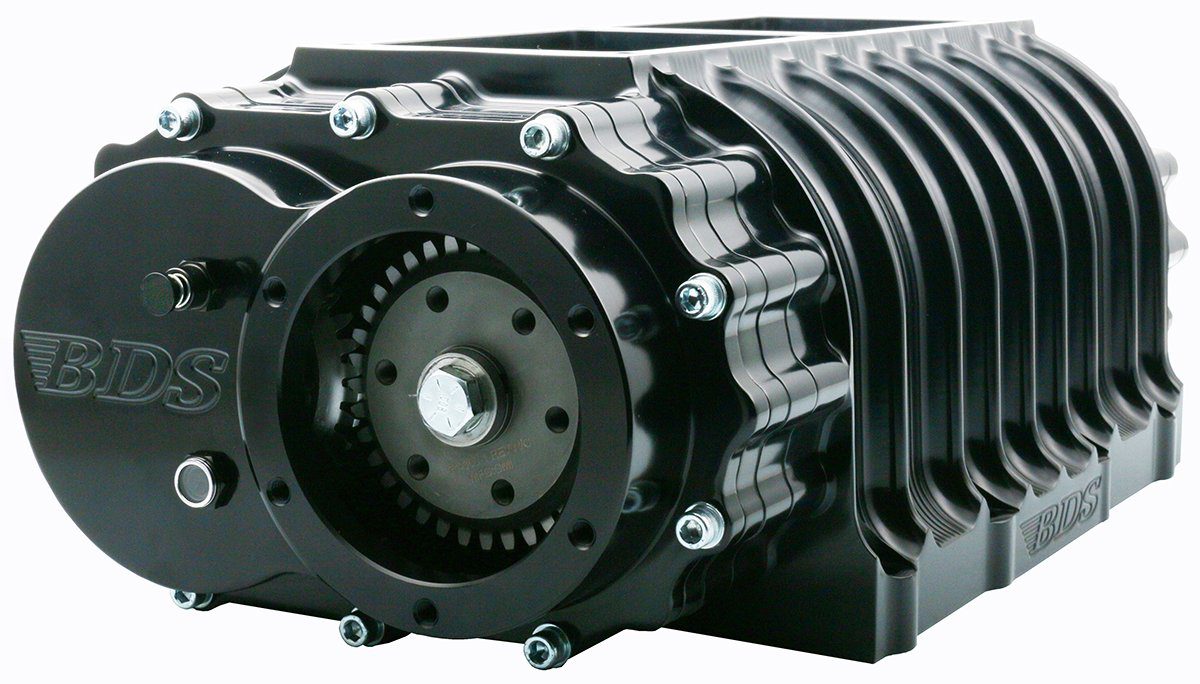 Blower Drive Service
Blower Drive Service The Blower Shop
The Blower Shop Whipple Superchargers
Whipple Superchargers Precision Turbo
Precision Turbo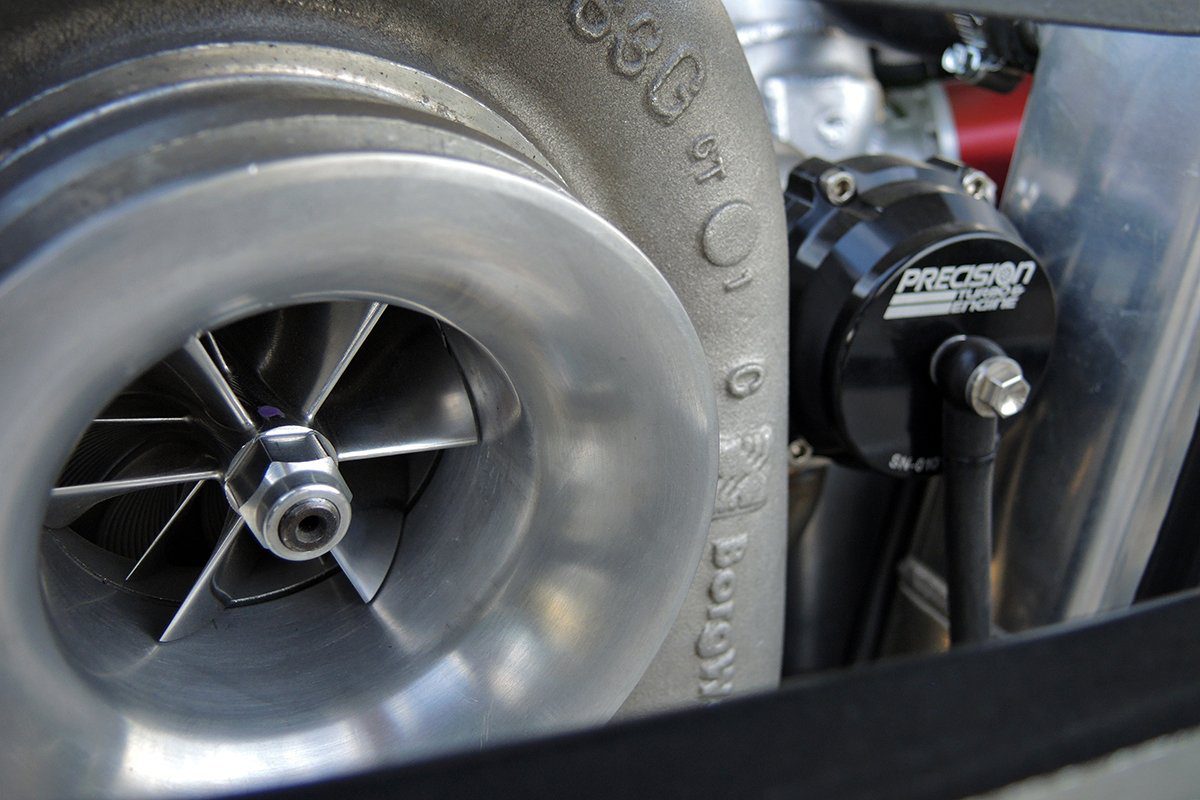 Sidebar – What about Turbos?
Sidebar – What about Turbos?
